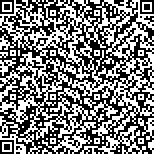| 摘要: |
| 城市街区的形态与空间品质关系密切。
在城市设计中借助智能工具实现街区形态的生
成是辅助设计决策的一项典型应用。既有的生
成式方法主要采用参数化建模、形流推理以及
图像生成算法实现,缺少对街区尺度形态规律
学习的过程因而难以处理复杂、精细的空间形
态关系,生成令人满意的形态结果。因此,本研
究在既有生成式方法基础上借鉴嵌入式系统理
论,提出一种通过嵌入机器学习训练模块优化
街区形态生成结果的综合性方法(简称“嵌入
式机器学习方法”)。该方法包含高质量的训练
数据、平衡的模型复杂度与性能、特征工程与模
型优化能力、独立运行的学习模块以及支持开
放接口与部署五个要素,实现在传统生成规则
中增加弹性并且可控的人工神经网络,可根据设
计需求对训练样本及模型进行自由组合,改善了既有算法的生成效果。该方法也增加了设计流程的灵活性,设计师可根据场地需要配置合适的训
练样本,并通过预训练的方法将结果嵌入生成式系统中,从而实现快速、便捷的三维形态生成,
辅助街区形态设计过程。文章阐述了一个探索性的实践案例,从模型目标、数据、训练过程等方面
进行阐述,并结合生成结果对比探讨了该方法对传统生成方法的改进,结果表明采用嵌入式机器
学习方法可以有效改善三维形态的特征细节,生成更契合场地特质的设计方案,为设计师带来有
益启示。最后文章提出了嵌入式机器学习方法的未来开发潜力,为城市街区设计中的人工智能技
术应用提出了新的思路和可能性。 |
| 关键词: 街区形态设计 嵌入式方法 生成式模型 机器学习 智能设计 |
| DOI:10.13791/j.cnki.hsfwest.20240301 |
| 分类号: |
| 基金项目:“十四五”国家重点研发计划课题(2022YFC38
00205) |
|
| Practical study on the application of embedded machine learning method in generativedesign at block level |
|
GAN Wei,WANG Yuankai,LI Xiang
|
| Abstract: |
| China’s urban development is transformed from rapid growth to optimization of built area,
paying more attention to the improvement of spatial quality. Accordingly, urban design work also
needs to be more refined and high-quality. The form of urban blocks is closely related to the spatial
quality. Block morphological design is a process of creating urban space at block scale. Compared
with macro-scale studies, block-scale morphological studies have the characteristics of scale, diverse
and discrete, which not only highlight the subtle relationship of urban spatial forms, but also reflect the
characteristics and styles of design, which brings challenges to generative models based on preset rules.
In the traditional design method, the design of urban form is realized by the designer according to the
aesthetics rules and experiences. On the one hand, it is limited by subjective cognition, and on the
other hand, it is difficult to define the subtle relationship of spatial form. The development of new data
environment and artificial intelligence technology has brought a new vision for the form generation of
block scale. In urban design, the generation of block form with the help of intelligent tools is a typical
application to assist design decisions, which provides a basis for creating reasonable space forms
and enables designers to propose more effective design strategies. The existing intelligent generation
methods mainly have three approaches: 1) parametric modeling, generating results according to
morphological rules; 2) form-flow reasoning, through the establishment of form-flow mechanism,
according to the flow elements to deduce specific forms; 3) image generation algorithm, which directly
generates design schemes based on image samples through deep learning. However, due to the lack of
learning process of block-scale morphological law, it is difficult to deal with complex and precise spatial
morphological relations and generate satisfactory morphological results.
On the basis of the existing generative methods, this study draws on the embedded system
theory, and proposes a comprehensive method to optimize the block form generation results
by embedding machine learning training modules (referred to as “embedded machine learning
method”). The proposed method is based on the demand analysis for block form design, and is
explained from three aspects: morphological knowledge extraction, gain innovation and elastic
generation. It is deduced that multiple optimized machine learning m灯瑤極浬楥穳愠瑮楥潥湤?灴敯爠晢潥爠浩慮湴捥敧?楡湴?瑤栠敩?瘊楴敨睥?潥晭?瑥桤敤?牤椠癦敯牲獭椠摯敮?汴慨湥搠獥捸慩灳整??睧栠楧捥桮?扲牡楴湩杯獮?扳敹湳整晥業挬椠慳汯?整湨污楴朠桴瑨敥渠浳敹湳瑴?晭漠牣?摮攠獭楥来湴攠牴獨??呲桥敱?灩慲灥敭牥?灴牳攊獯敦渠瑴獨?琠桧敥?晥畲瑡畴物敶?搠敡癬敧汯潲灩浴敨湭琠?灯潲琠敢湬瑯楣慫氠?潯晲?攠浤扥敳摩摧敮搮?浉慮捣桲楥湡敳?氠整慨牥渠楦湬来??楢湩捬汩畴摹椠湡杮?洠畡汤瑡楰?浡潢摩慬汩?摹愠瑯慦?晴畨獥椠潭湯?浥慬挠桡楮湤攠?汲敯慭牯湴楥渠杴??映汭敡确椭扭污散?慩湮摥?摣楯癬敬牡獢敯?捡潴浩扶楥渠慤瑥楳潩湧?漠晰?慯汣来潳牳椮琠桔浨?浳漠摭略汴敨獯??慩湮摣?桵楤来桳敦物?煥甠慥汬楥瑭祥?浴慳渺?浨慩捧桨椭湱敵?捬潩汴汹愠扴潲牡慩瑮楩癮敧?摤敡獴楡本渠?灡牬潡据散獥獤攠獭??呥桬攠?慩畴瑨栠潣牯?扰敬汥楸敩癴敹猠?瑮桤愠瑰?捲潦浯扲業湡楮湣来?琠桦敥?慴摵癲慥渠瑥慮杧敩獮?潥晲?慮牧琠楡普楤挠業慯汤?楬渠瑯数汴汩業杩敺湡捴敩?睮椠瑣桡?瑡桢敩?捩汴慩獥獳椬挊慩汮?略牰扥慮湤?浮潴摬敹氠?瑵潮?捩牮敧愠瑬敥?慲?湩敮睧?晭汯敤硵楬扥汳攬?楡湮瑤攠杳牵慰瑰敯摲?洠潦摯敲氠?瑰潥?挠潩灮整?睲楦瑡档?琠桡敮?挠潤浥灰汬敯硹?慥湮摴?搠楴癯攠牡獣敨?摥敶獥椠条湮?敡湲癴楩牦潩湣浩敡湬琠?捥慵湲?灬爠潮癥楴摷敯?湫攠睷?楴摨攠慩獮?慲湥摡?灥潤猠獦楬扥楸汩楢瑩楬敩獴?昊潡牮?琠档敯?灴牲潯扬汬敡浢?潬晩?晹漠物浮?捴牲敡慤瑩楴潩湯?楡湬?执汥潮捥歲?潴物?畮爠扲慵湬?摳攮猠楔杲湡??慩湮摧?桳潡灭数獬?瑳漠?灮牤漠浭潯瑤敥?浳漠牣敡?搠楢獥挠畦獲獥楥潬湹猠?慯湭摢?灮牥慤挠瑡楣捣敯獲?潩湮?攠浴扯攠摤摥敳摩?浮愠捲桥楱湵敩?汥敭慥牮湴楳渮朠?浨敥琠桧潥摮獥?慡湴摩?敮渊牥楦捦桥?瑴栠敯?琠桴敨潥爠祥?慩湳摴?瑮敧挠桡湬潧汯潲杩祴?業渠?畳爠扩慭湰?摯敶獥楤朮渠?灨物慳挠瑭楥捴敨?d also increases the flexibility of the design process. Designers can configure appropriate training
datasets according to the needs of the site, and embed the results into the generative system through pre-training method, so as to realize fast and convenient
three-dimensional form generation and assist the block form design process.
In this paper, an exploratory practice case is presented, which integrates the learning module of the architectural texture characteristics of the riverfront
area in the city into the block form generation model. The research process of this case is described from the aspects of model objectives, data and training
process. The morphological data of waterfront urban areas of the same type are taken as samples, and the machine learning and image transfer learning
models are embedded into the generative algorithm of block morphology. By comparing the generated results, the improvement of this method over the
traditional generative method is discussed. The results show that the embedded machine learning method can effectively improve the feature details of the
three-dimensional form, generate a design scheme that is more suitable for the characteristics of the site, and has excellent o��������������������������������������������������������������������������������������������������������������������������������������������������������������������������������������������������������������������������������������������������������������������������������������������������������������������������������������������������������������������������������������������������������������������������������������������������������������������������������������������������������������������������������������������������������������������������������������������������������������������������������������������������������������������������������������������������������������������������������������������������������������������������������������������������������������������������������������������������������� |
| Key words: block morphological design embedded methods generative models machine learning intelligent design |


